- Stone Kitchen Top -
We Tailor-Made the Kitchen Countertops for Your Dream Home
You use the kitchen top more than any other part, so selecting a long-lasting material for your kitchen top is essential.
Choosing stones for the kitchen top is often the best option.
What stone is best for kitchen countertops?
Should you choose quartz, sintered stone or granite?
First,
Check The Sunlight
This step is crucial, especially if your kitchen window faces east or west.
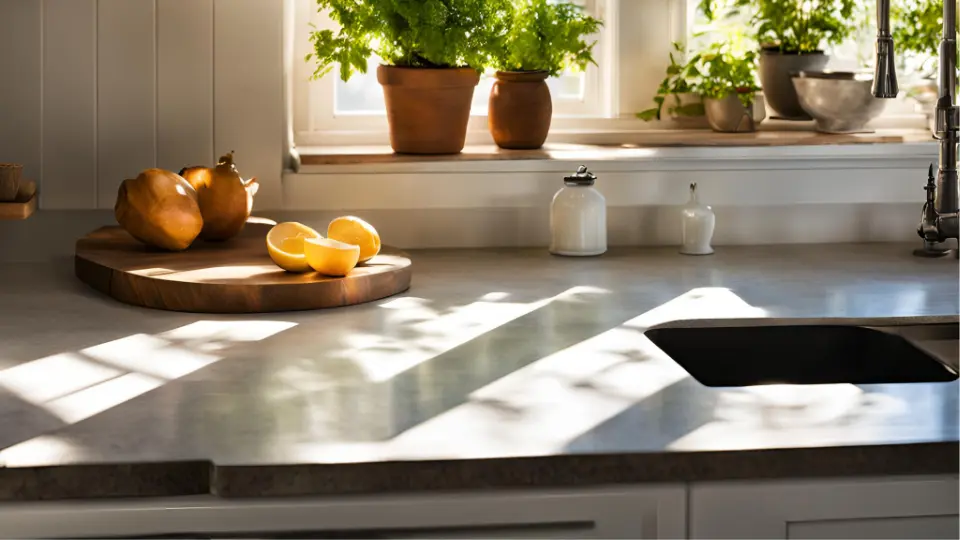
Avoid using quartz stone if the sunlight has direct spots on the kitchen top.
Resin is a key element in quartz stone; it helps to increase quartz stone strength and flexibility. However, when the resin is exposed to sunlight's UV rays, it can undergo a chemical reaction, resulting in discolouration on the surface of the quartz stone countertop.
In this case, we suggest using sintered stone (a.k.a. porcelain slab). Otherwise, we highly recommend using quartz stone as your kitchen top.
Sintered Stone is Resin-free
The sintered stone is produced using a sintering process with a super compression machine. No resin is used to bind the minerals to form the slab.
Its zero-resin characteristic makes it invulnerable to UV rays that cause discolouration, making it ideal for kitchen countertops exposed to sunlight.
Hence, it is best used for surfacing for outdoor applications. We display our porcelain slab under weather conditions.
No colour dimming so far.
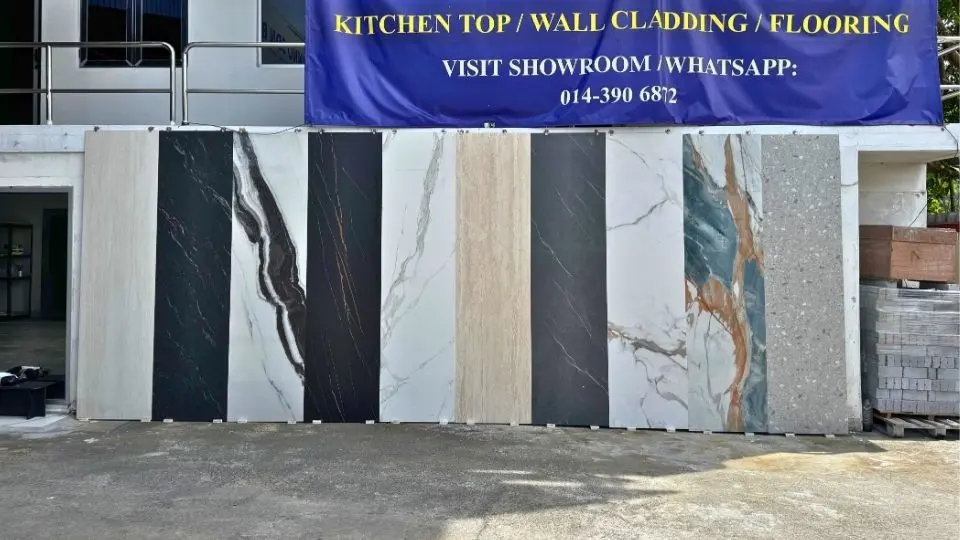
The Drawback of Using Sintered Stone
Before making your final decision, it's important to weigh the possible disadvantages of sintered stone that you should consider. If you can overlook these issues, sintered stone stands out as one of the finest materials for your countertops.
The Vein is Printed on Surface Only
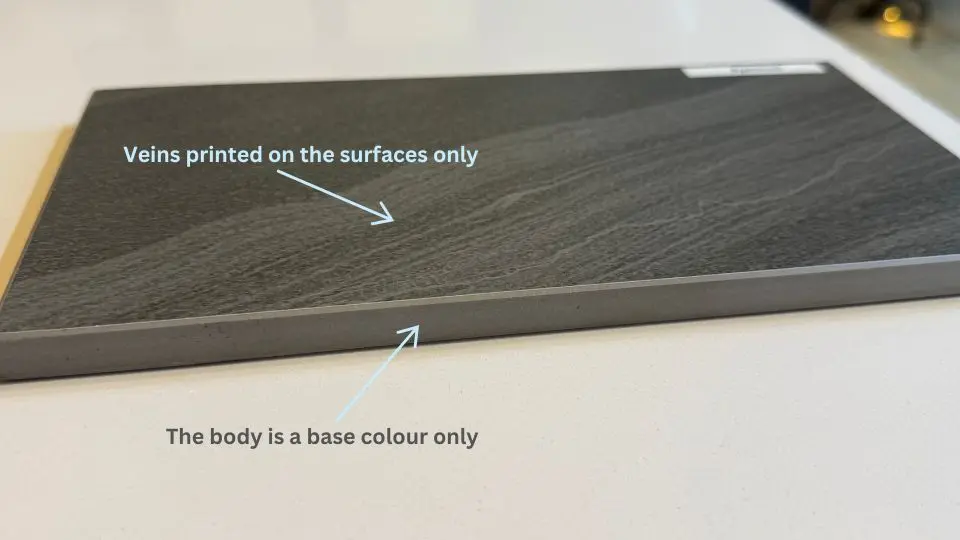
Most sintered stone on Malaysia's market are not full body (not homogeneous).
The veins are printed 2mm on the surface; unlike natural stone, you cannot polish porcelain slab and return it to its original condition.
Chip-off
The sintered stone is made using a sintering process. The stone has pressure inside the body.
Imagine we press a big sponge into a small ball and release it. The sponge will expand. The same goes for a porcelain slab. It will not expand like a sponge but might chip off if the corner edge is hit by items such as glass bottles or pots.
If hit the weak point, the edging will chip off, as shown in the images: -
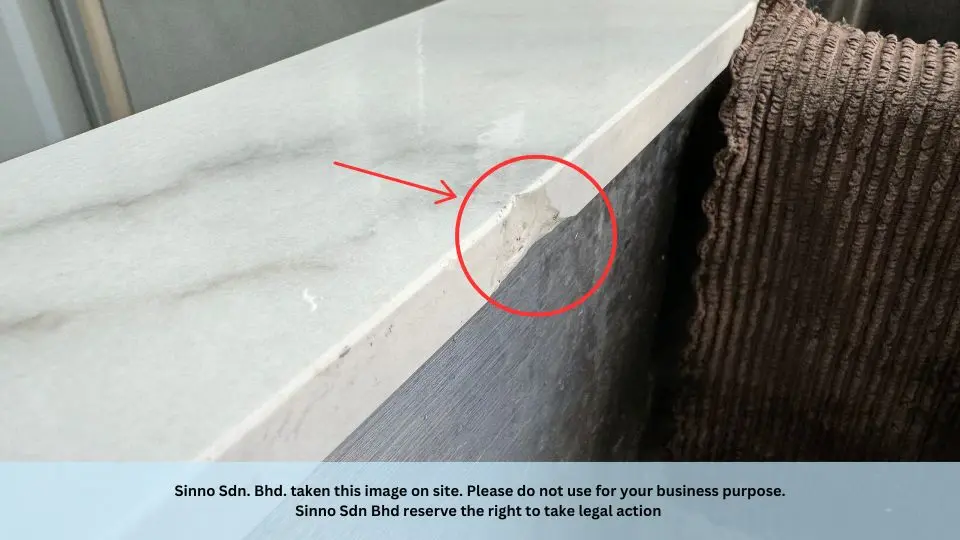
You will be surprised!
The owner mentioned the chip-off is caused by washing the pot cover and she accidently hit the edging.
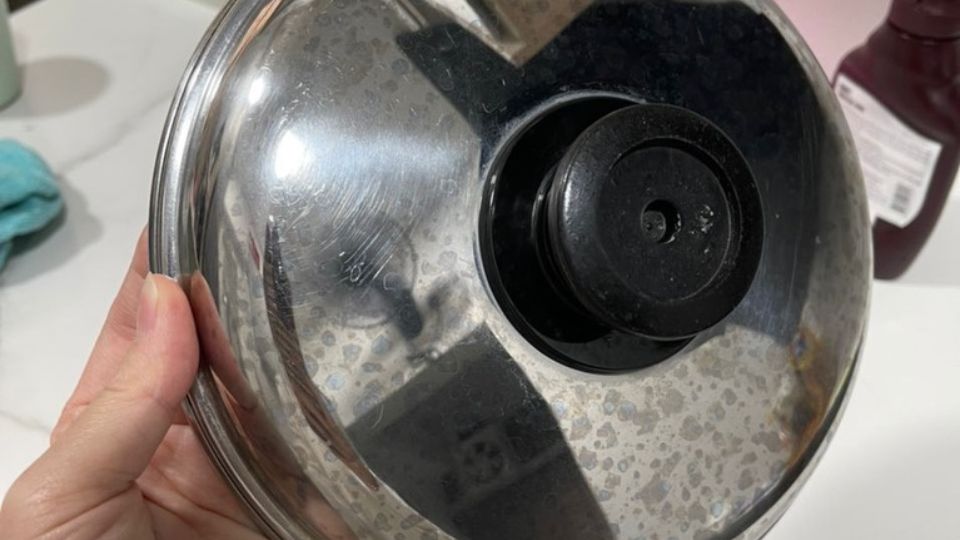
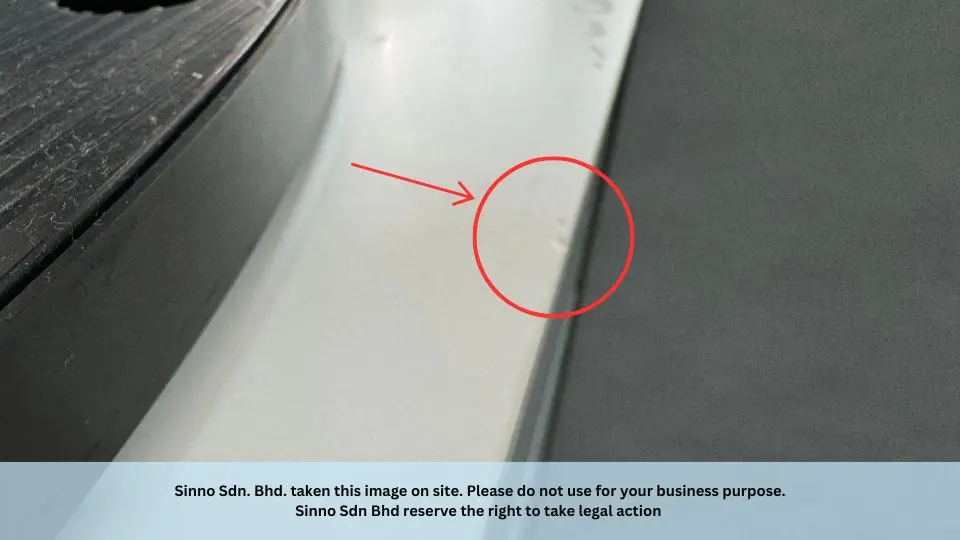
How do We Reduce the Possibility of chip-off?
After discussing with the sintered stone's manufacturer, to reduce the chip-off possibility, the edging that is exposed needs to be polished 3mm chamfered as below picture: -
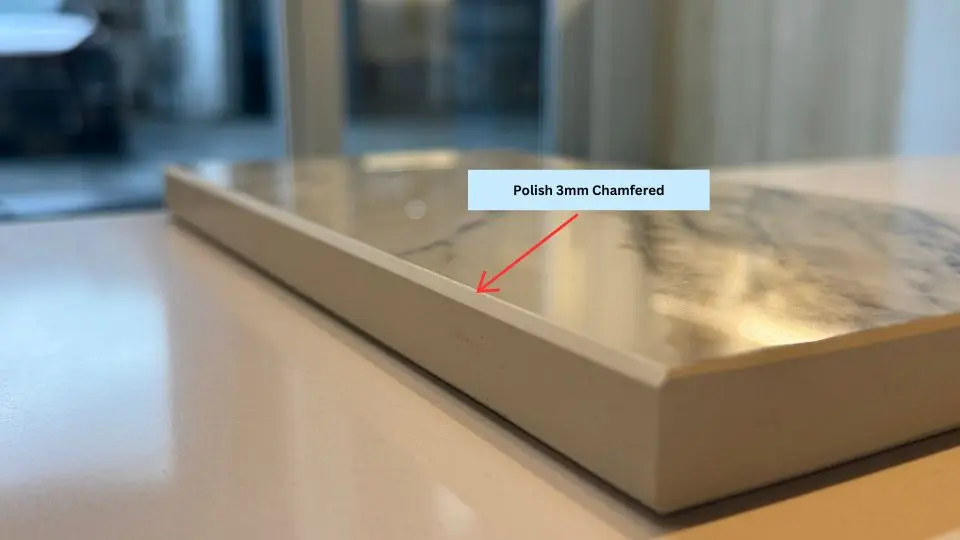
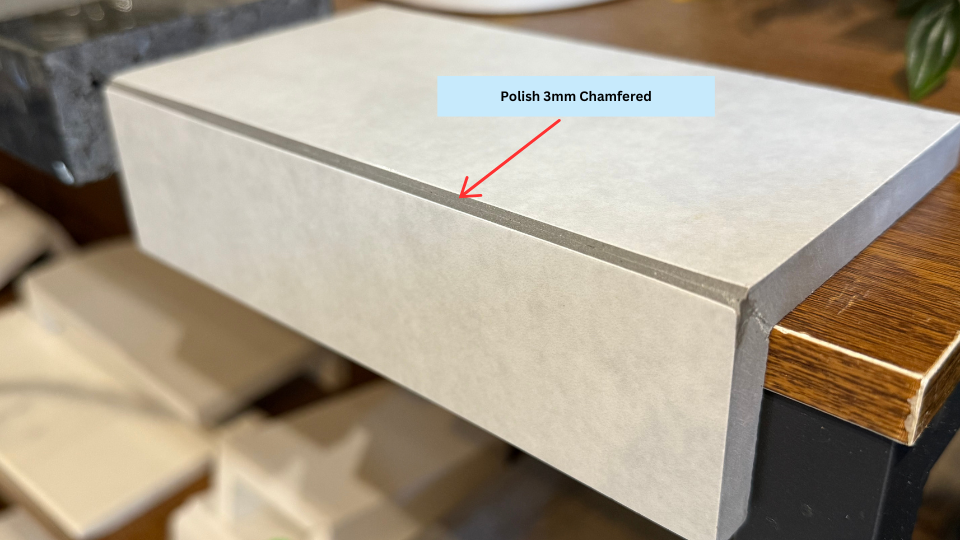
2 Tones Colour
The 3mm chamfered edging significantly reduces the possibility of chipping off. Did you notice that the polishing line shows the body and glue colour? It creates a 2-tone visual effect.
Please proceed with your porcelain slab order only if you can accept it. We have customers who are taking it as a highlight.
Disclaimer
Polishing 1 mm or 2 mm chamfered edging is more effortless and saves us much time. You are welcome to request it if you are willing to take the risk and bear the consequences.
Veins Visual Break
The sintered stone colour & vein are not the full body, and we also need to polish 3mm to reduce the chip-off possibility. This limitation in fabrication results in a visual disruption of the veins, as shown below: -
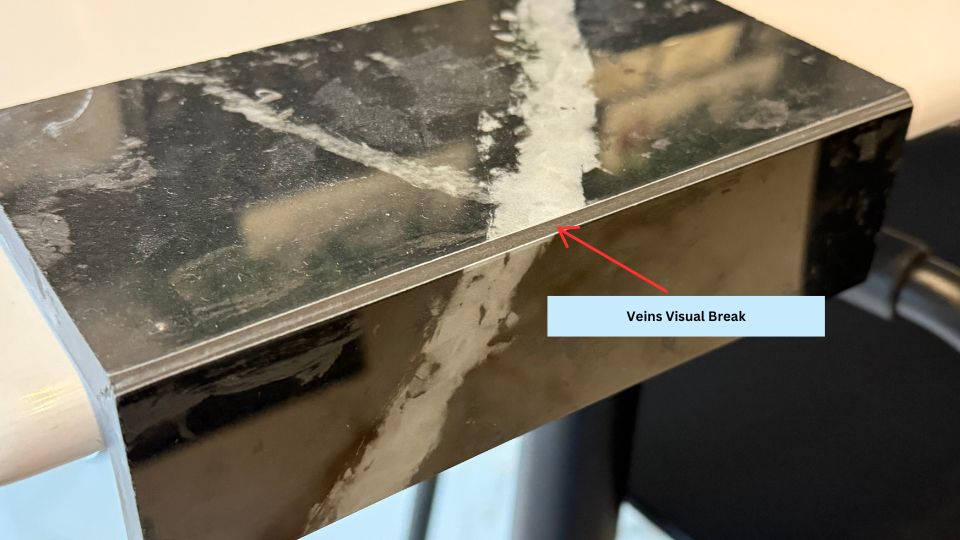
Low Impact Resistance
Sintered stone does not use resin to bind the materials to form a slab, so it is naturally more prone to cracking than quartz stone.
A heavy object falling and hitting the surface's weak point may create a crack, while quartz stone will get dented.
You might want to check out the article or video from "Consumer Reports" that tests Dekton. As the top-tier sintered stone, Dekton also can't withhold the high impact. What about the sintered stones that fall short of Dekton's quality?
Even with the findings, if you don't intend to place heavy or bulky items in your tall cabinet, Dekton and sintered stone are still considered some of the finest options for kitchen tops in today's market.
Glazed & Glossed
Sintered stone has more finishes than quartz stone. There are gloss, matt, smooth matt, baby matt, and leather finishes.
Among the finishes, gloss finish remains the most popular choice for Malaysian consumers.
Some sellers told you that it is a polished finish. Nah~ the actual finish is glazed and gloss, and its reflection rate is much higher than that of a polished finish.
Below are quartz stone polished finish and sintered stone gloss finish
The gloss finish is like a coating on the surface.
We do not recommend using gloss-finished sintered stone for heavy cooking and long-term use. Friction can cause the glaze to disappear, so after using it for some time, you can see many minor scratches.
However, if you scratch it with your finger, you don't feel the line is sunken. Again, if you use a cutter or knife to scratch the surface, you can't hurt it. Why?
The answer is simple; it proves the surface is a glaze and gloss finish.
Is sintered stone still a good option for kitchen tops?
Our answer is "Yes" for the area that receives direct sunlight. The crucial question is if you can tolerate the disadvantages outlined.
Our Sintered Stone Catalogue
Check out the sintered stone colours
Custom Made Sintered Stone Kitchen Top
Get An Estimate Quote Today!
For the kitchen is not exposed to direct sunlight.
We highly recommend using quartz stone as your kitchen top.
It's heavy use and ideal for families who prepare home-cooked meals on a daily basis.
Rarely Chip-off
Quartz stone uses different technology to make the slab. Unlike sintered stone, quartz stone uses resin to bind the materials.
Quartz stones rarely chip off if knocked by kitchen utensils and cooking operations.
High Impact Resistance
The resin also helps increase the strength of quartz stone. When heavy objects hit the surface, the quartz stone rarely cracks but scratches or sunken.
Resin Increase Flexibility
If you're looking for unique profile edging, we could fabricate quartz stone for the following profile edging.
Profile Edging
Check out the catalogue
Quartz Stone is Homogenous
There is no two-tone colour and veins visual break on the chamfered edging.
Quartz Stone's Finish is Polished
Although it is as glossy as a gloss-finish sintered stone, there is no glaze to lose on the surface, so it will remain as it is for a long time.
Stone Kitchen Top
The one area of the kitchen you will utilize every day.
Your spices are lined up on the countertop as you cook.
You lay out your kitchenware and utensils on its surface.
You wash glasses and dishes at the kitchen sink area day in and day out.
The durability of a kitchen countertop is essential.
You require a stone kitchen countertop that is tough enough to handle scratches and prevent staining.
We recommend quartz stone as priority if your kitchen is not exposed to direct sunlight.
You should use sintered stone for the kitchen, which is exposed to direct sunlight.
You may consider dark colour granite if you prefer natural and your kitchen is also exposed sunlight.
Hope this tip helps you choose the most suitable kitchen top for your dream home.
Welcome reach out to us for any inquiry about stone surfacing for kitchen top.
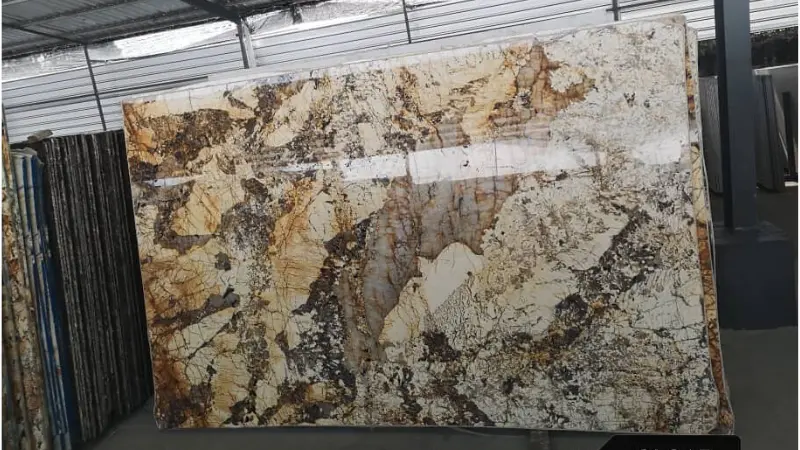
Granite

Quartz Stone
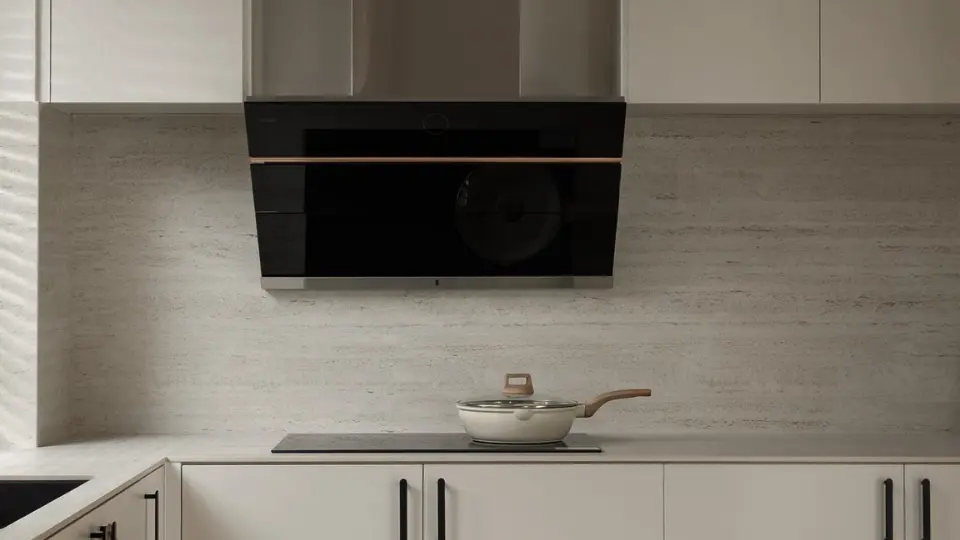
Sintered Stone
Custom Made Stone Products
Get An Estimate Quote Today!
Frequently asked questions
Here are some common questions about stone kitchen top.
As a stone fabricator and installer, we can confidently say that quartz stone is currently the most durable option available. This stone is ideal for kitchen countertops with heavy applications.
If you are confident that the hot pan is not exceeding 200°C, you may put it on the quartz stone. However, we don't recommend doing that. We wouldn't know the temperature by seeing the hot pan. Using a trivet, mat, or cloth is advisable to prevent excessive heat from damaging the quartz stone.
Exposure to UV rays can affect quartz stone countertops. If the countertops are near a window with direct sunlight, you may notice some fading in colour. This change won't hinder their functionality, but the uneven appearance might bother some individuals.